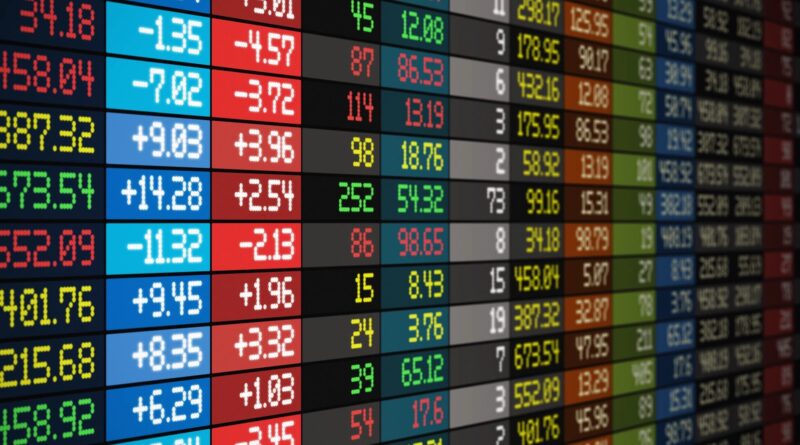Forex Trading Strategies for the Canadian Dollar: Navigating the Dynamics of the Loonie
The foreign exchange (forex) market is a dynamic arena where currencies from around the world are traded. Among these currencies, the Canadian dollar (CAD), often referred to as the loonie, stands as a key player. Trading the Canadian dollar involves understanding the various factors that influence its value and developing effective strategies to capitalize on market opportunities. This article explores forex trading strategies specifically tailored for the Canadian dollar, considering its unique characteristics and the broader economic landscape.
Understanding the Canadian Dollar
- Commodity Dependency: One of the distinctive features of the Canadian dollar is its correlation with commodity prices, especially those of oil and natural gas. Canada is a major exporter of these commodities, and fluctuations in their prices can significantly impact the Canadian dollar’s value. Traders need to closely monitor commodity markets and global economic trends to anticipate potential moves in the loonie.
- Interest Rate Differentials: Interest rates play a crucial role in forex markets, and the Canadian dollar is no exception. Traders should keep a watchful eye on interest rate differentials between Canada and other major economies, particularly the United States. Changes in interest rates can influence the attractiveness of the loonie to investors and impact its exchange rate.
- Economic Indicators: Key economic indicators, such as GDP growth, employment data, and inflation rates, provide insights into the health of the Canadian economy. Monitoring these indicators is essential for traders seeking to understand the underlying factors influencing the Canadian dollar’s value.
Forex Trading Strategies for the Canadian Dollar
- Commodity Price Trends: Given Canada’s reliance on commodity exports, traders can incorporate commodity price trends into their strategies. For instance, when oil prices are rising, the Canadian dollar often strengthens. Traders can use technical analysis tools to identify trends in commodity prices and align their positions with potential movements in the Canadian dollar.
- Interest Rate Carry Trades: Interest rate differentials between Canada and other major economies create opportunities for carry trades. In a carry trade strategy, traders may go long on the currency with a higher interest rate (if favorable economic conditions are expected) and short the currency with a lower interest rate. Monitoring central bank decisions and economic indicators that may influence interest rates is crucial for implementing successful carry trades involving the Canadian dollar.
- Economic Calendar Events: Traders should pay close attention to economic calendar events, including key releases such as GDP reports, employment data, and inflation figures. These events can lead to increased volatility in the forex market, providing trading opportunities. For instance, positive economic data may strengthen the Canadian dollar, while negative data may lead to depreciation.
- Central Bank Policies: The Bank of Canada plays a central role in shaping monetary policy, and its decisions can impact the Canadian dollar. Traders should stay informed about central bank announcements, policy statements, and speeches from policymakers. Changes in monetary policy, such as interest rate decisions or shifts in the bank’s outlook, can influence the loonie’s value.
- Correlation Analysis: Understanding the correlation between the Canadian dollar and other currencies or asset classes is crucial. For instance, the CAD/USD pair often exhibits a correlation with oil prices. Traders can use correlation analysis to diversify their portfolios and manage risk effectively. Identifying strong correlations can help traders make more informed decisions when trading the Canadian dollar.
- Technical Analysis Tools: Technical analysis involves studying historical price charts and using various indicators to forecast future price movements. Traders can employ technical analysis tools, such as moving averages, trendlines, and oscillators, to identify potential entry and exit points for Canadian dollar trades. Technical analysis can be particularly useful for short-term traders looking to capitalize on price fluctuations.
- Risk Management Strategies: Implementing effective risk management strategies is paramount in forex trading. Traders should set clear risk-reward ratios, use stop-loss orders to limit potential losses, and diversify their portfolios. Given the volatility in currency markets, having a disciplined approach to risk management is essential for long-term success.
- Diversification of Trading Pairs: While the focus is on the Canadian dollar, traders should consider diversifying their trading pairs to spread risk. This involves trading other major currencies or currency pairs that are not directly correlated with the loonie. Diversification can help traders navigate different market conditions and reduce exposure to specific risks.
Case Studies: Applying Forex Trading Strategies for the Canadian Dollar
- Oil Price Surge and the Loonie: Consider a scenario where global oil prices experience a significant surge due to geopolitical tensions or supply disruptions. Traders anticipating a strengthening of the Canadian dollar can implement a strategy aligned with this trend. They might go long on the CAD/USD pair or consider options and futures contracts that benefit from a rise in the Canadian dollar.
- Bank of Canada Rate Hike: Suppose the Bank of Canada signals a potential interest rate hike in response to strong economic indicators and inflationary pressures. Traders expecting the Canadian dollar to appreciate could initiate a long position on the loonie against other currencies. This strategy is based on the anticipation of higher interest rates making the Canadian dollar more attractive to investors.
- Economic Data Disappointments: If key economic indicators, such as GDP growth or employment figures, fall short of expectations, traders might anticipate weakness in the Canadian dollar. In response, they could consider short positions on the loonie or implement risk-off strategies that involve safe-haven currencies. Effective risk management is crucial in scenarios where economic data disappointments lead to currency depreciation.

Trading the Canadian dollar in the forex market requires a nuanced understanding of the factors influencing its value and the ability to adapt to changing market conditions. From commodity price trends to interest rate differentials and economic indicators, successful traders navigate a complex landscape with a strategic approach.
Implementing forex trading strategies for the Canadian dollar involves a combination of fundamental and technical analysis, risk management, and staying abreast of global economic developments. Traders should continuously refine their strategies based on market dynamics, geopolitical events, and shifts in economic fundamentals to capitalize on opportunities and manage risks effectively in the ever-evolving world of forex trading.


